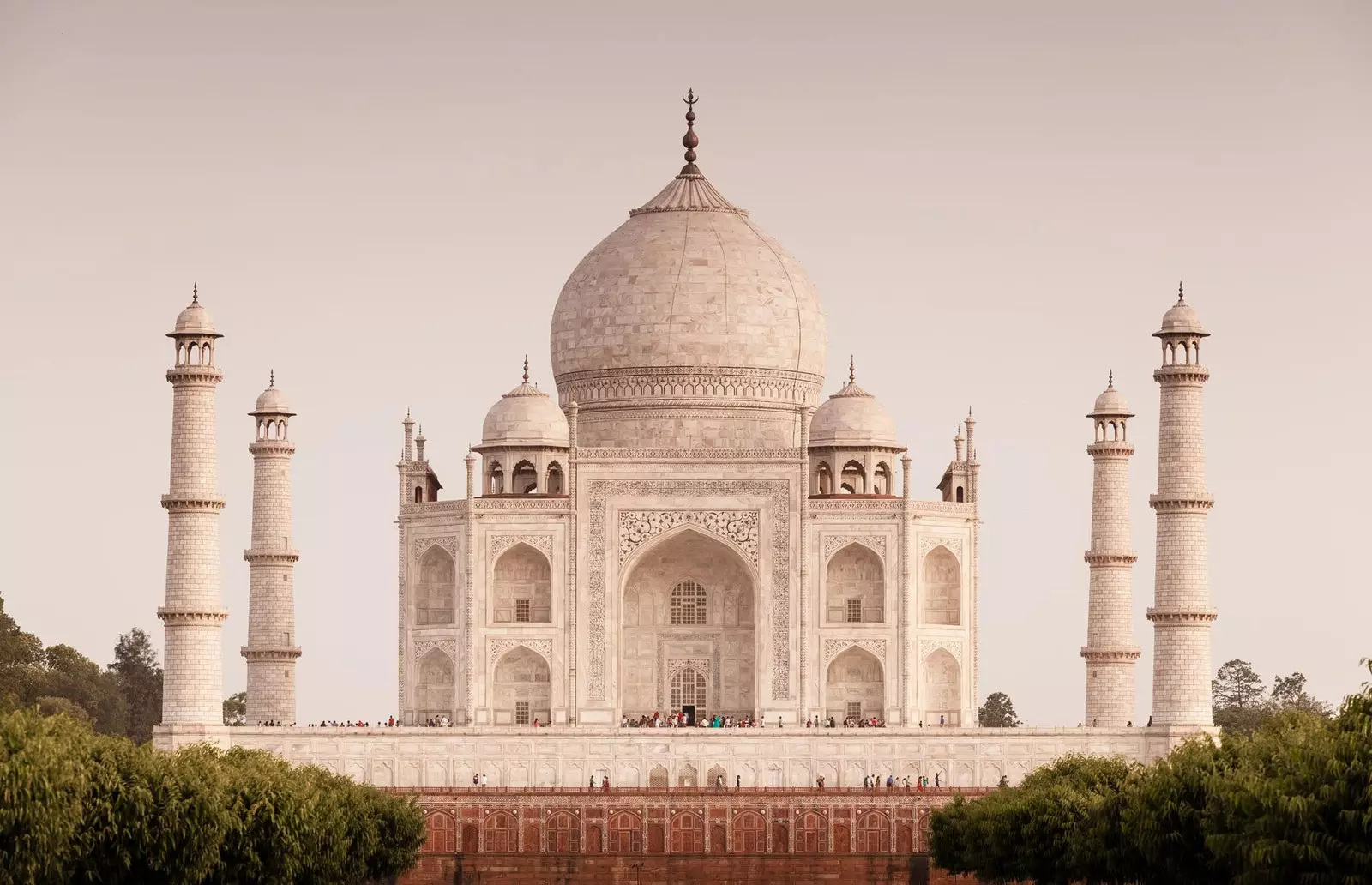
The Taj Mahal, one of the seven wonders of the world
Agra boasts of sheltering the most beautiful marble tear on earth, the ** Taj Mahal **.
Beauty and luxury coexist with the majesty and sorrow that each sunset dyes pink the greatest expression of love that exists on the planet.
It is one of the symbols of vitality, purity and strength from India. But not the only one.
Barely three kilometers north of the Yamuna river, stands the largest fort in the country that keeps the biggest secrets and betrayals that devastated a broken family after the death of its fundamental pillar with a woman's name: Mumtaz Mahal.
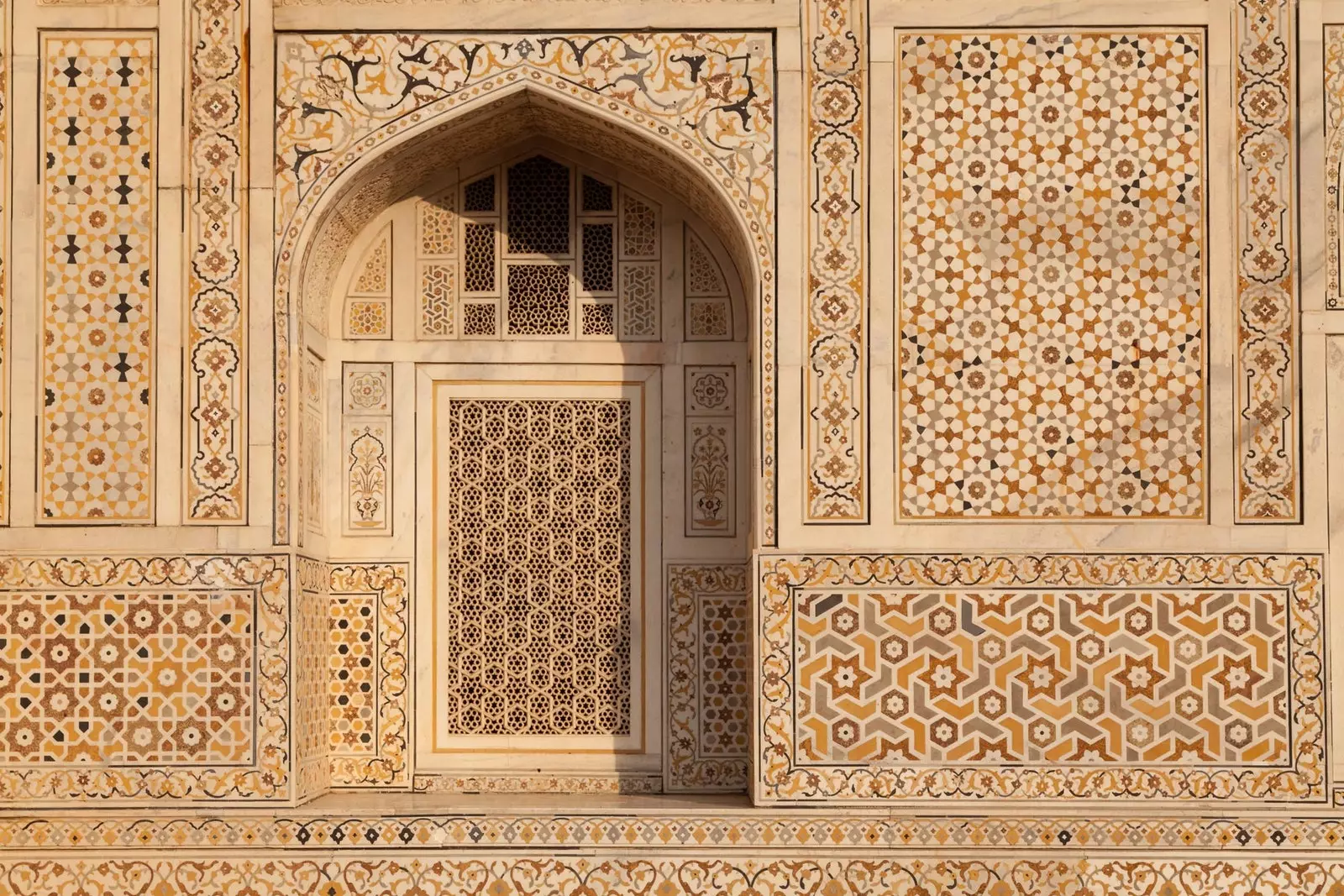
One of the beautiful facades of the city of Agra
Agra did not arouse our admiration or surprise on arrival. Rather, it bordered on the opposite. Locating our hostel was not an easy task.
A platoon of rickshaws overwhelmed us at every step through the crowd. Dodging the motorcycles and the famous tricycles and after a long walk, we arrived at the destination skipping rubble, garbage and cows that populated many of its alleys.
But we feel privileged to stay a few steps from the Taj Mahal, in the discreet and quiet neighborhood of Tajgant.
It is the Muslim district of Agra that was created to house the retinue of master masons of the architect Ustad Ahmad Lahori. here they lived the more than 20,000 workers who for two decades shaped one of the seven wonders of the world.
Our first handicap was water, the most precious commodity in India. Specifically, hot water. "At nine at night it is cut off until seven in the morning," the owner assured us, "because it is restricted by the city council due to the risks it may pose to the Taj Mahal," he said.
The next day we learned that not even Carlo Collodi would have devised such a lie for the protagonist of his famous story.
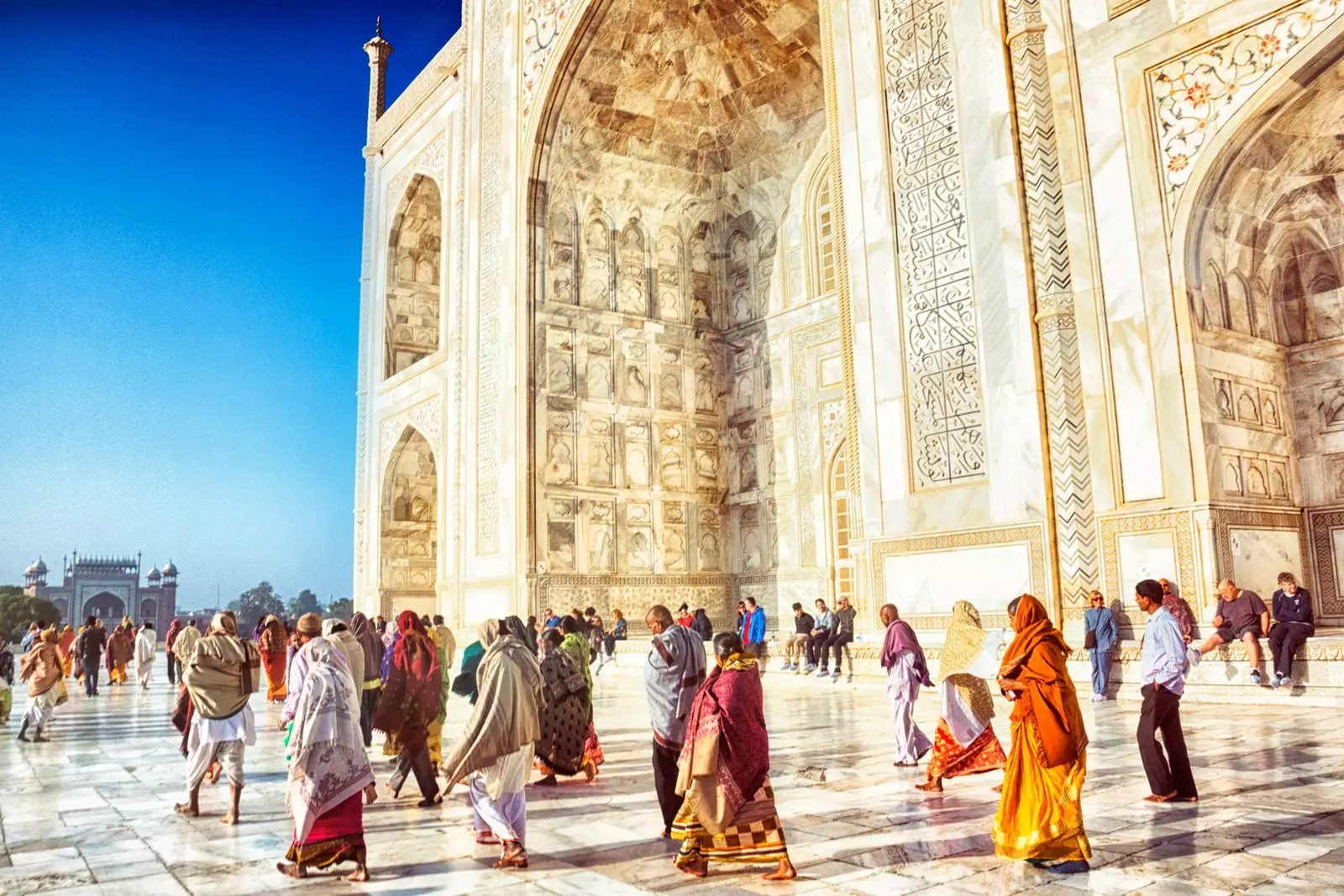
Tourists queue from early in the morning to enter the Taj Mahal
Before the first rays of light caressed the four minarets guarding the most popular mausoleum in the world, the crush of tourists was already quite large at the west gate, the main access to the monument where tickets are purchased.
They cost 1,100 rupees per person for foreigners. For Hindus, 50. It opens every day at six in the morning, except Fridays, a holy day for Muslims. An hour before there was already a queue to get in.
Several groups of Japanese and Argentines waited, mobile in hand, for be the first to go through the security tape where (except water) neither food nor drink is allowed; Inseparable lovers constantly sought her lips and excited schoolchildren moved their rickety classrooms to a movie set that day.
the same as James Bond toured in Octopussy before leaving for East Berlin.
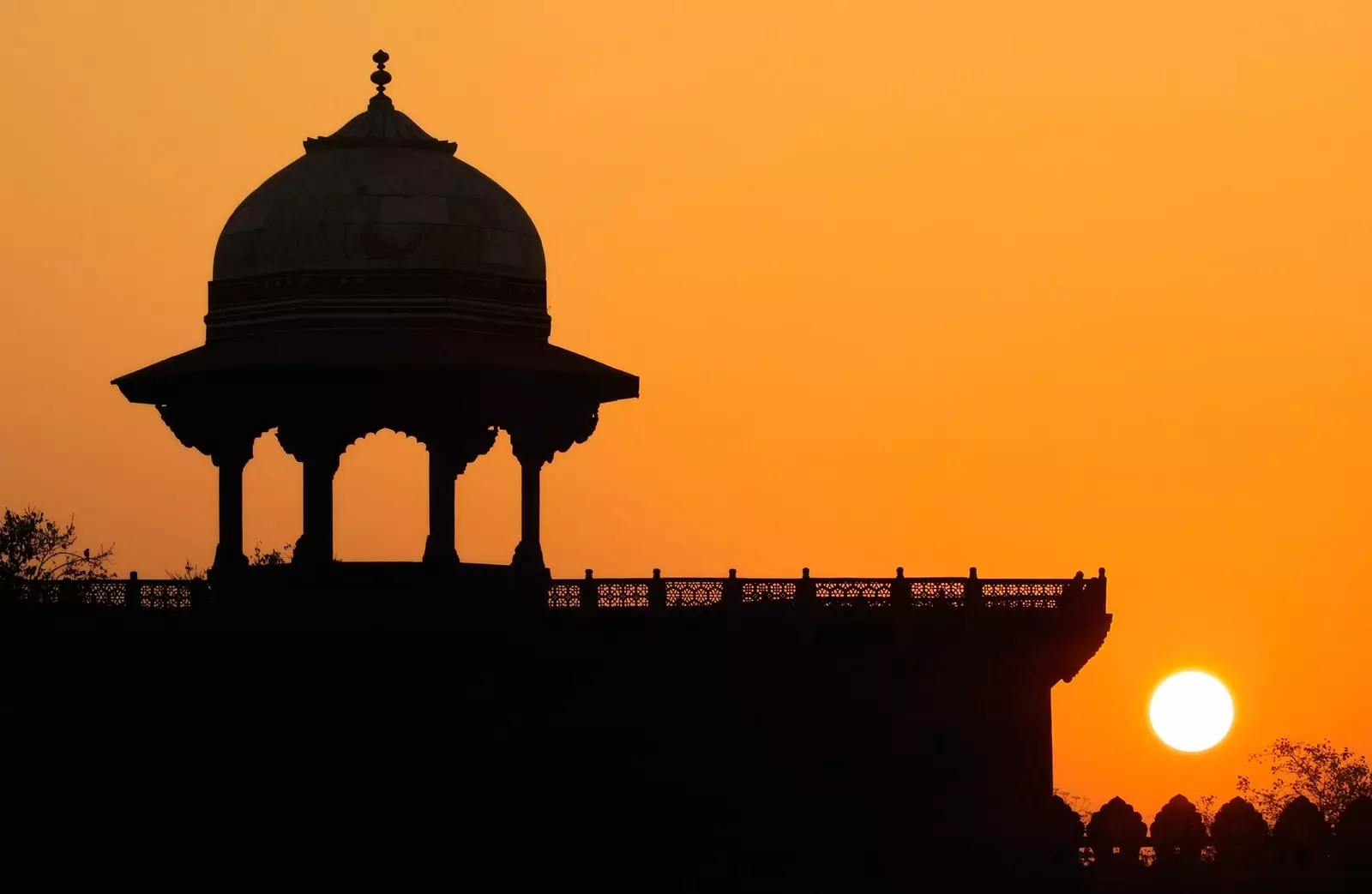
Dawn in Agra
In the Taj Mahal what should be prohibited is not dreaming and feeling. It is true that, in recent years, the movement of tourists who day after day, with their footsteps, mold a marble increasingly threatened to erase its traces of the past has been felt too much.
Pollution does the rest and dyes the immaculate white of the mausoleum a subtle yellow. What has led the Indian authorities to rethink the Limitation of daily entries.
Between 40,000 and 80,000 people they access the walled enclosure in a rush and are scattered throughout its 17 hectares.
The best way to visit and get to know the Taj Mahal is be accompanied by a good guide. It is advisable to hire an official one, with his identification plate, and not fall for the subtlety of some smart people entrenched in the doors of the monument to extract a few rupees from the unsuspecting.
Although if the explanations are similar to those that Jamal and Samil offered with great self-confidence and great verbiage in Slumdog Millionaire the tour, for sure, will be quite entertaining.
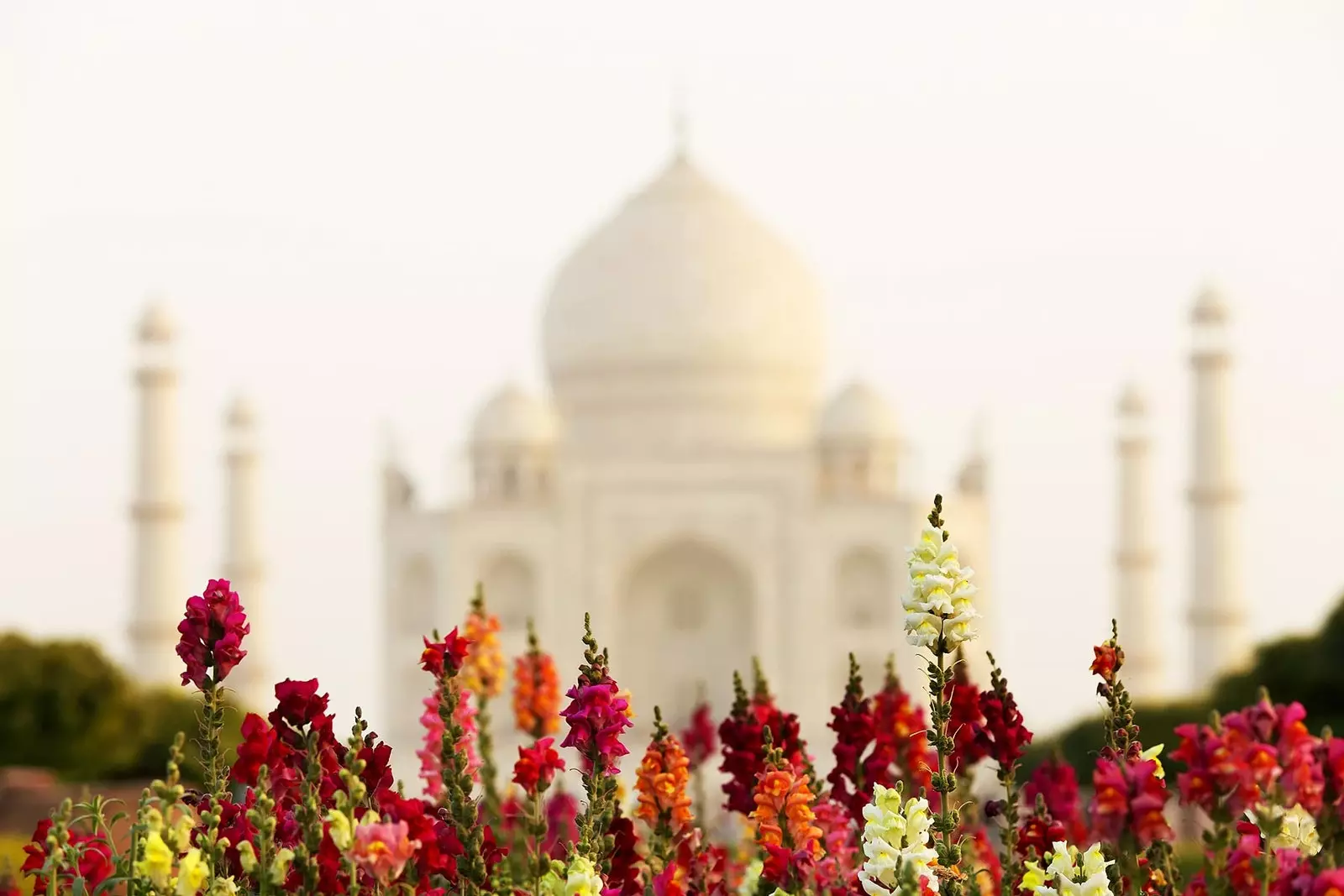
The most beautiful white postcard in the world
He was the Mughal Emperor shah jahan who ordered to build the greatest tribute of love ever seen. It has three entrance doors, one for each house wife of the so-called King of the World. Although only one of them snatched his heart, Mumtaz Mahal, the mother of his 14 children.
Neither all the wealth of the world they possessed nor the happiness that united her passionate and unbridled love prevented the fatal destiny that awaited her: death. Before she died, Mumtaz asked her husband for three things.
The first, that he should not remarry. The second, that she had no more children. And the third, that she build in her honor the greatest mausoleum on earth where she could remember her.
Her requests were met and the latter delights visitors by being one of the largest white postcards in existence, surmounted by a copper arrow (before it was gold) that looks at the sky.
A picture that conquered Lady Di during her last official visit to India, converted into the greatest snapshot of restlessness and loneliness that the world visualized.
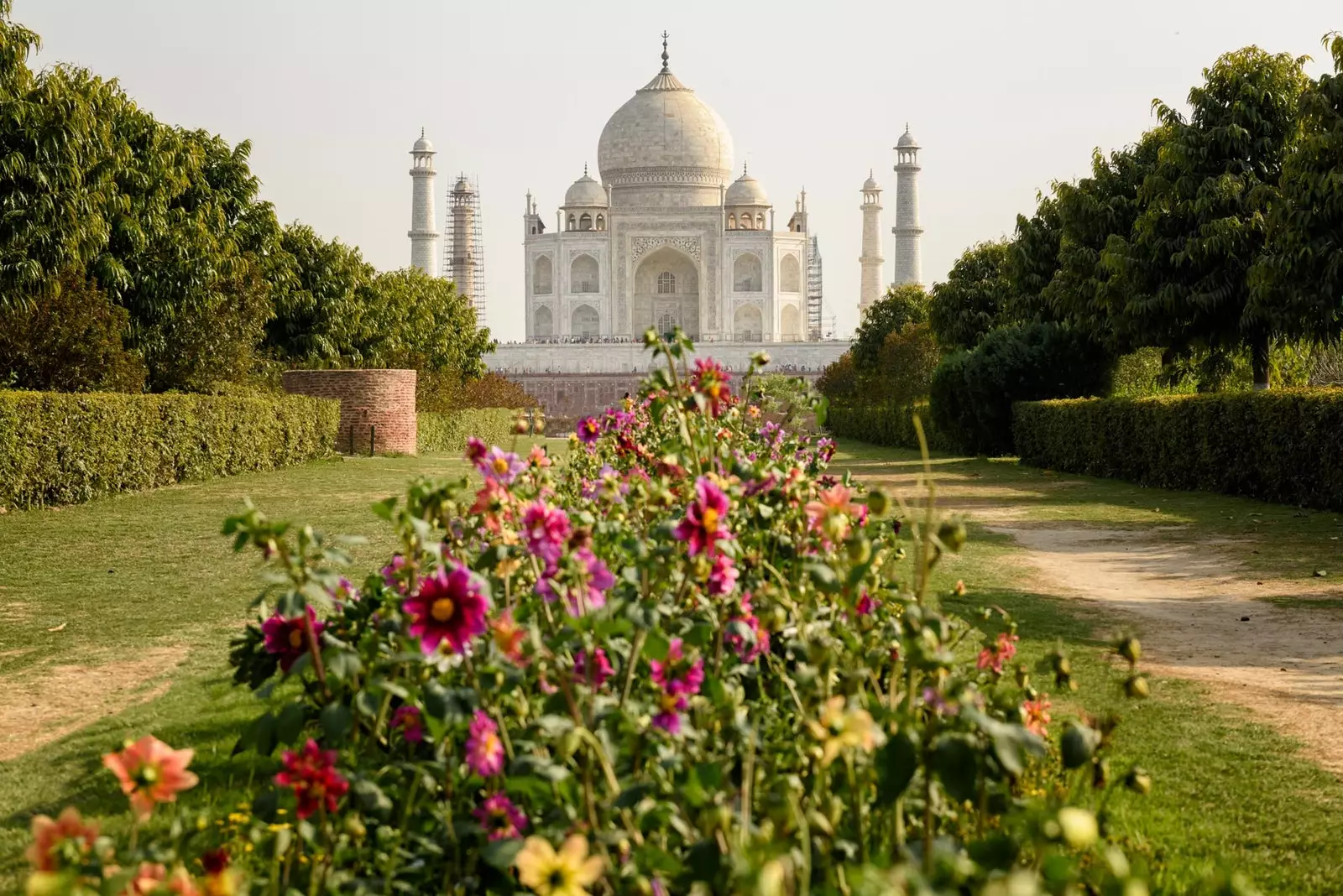
The Tah Majal from the Mehtab Bagh Gardens
If in doubt between visiting this world wonder at sunrise or sunset, both options are great.
The most important thing is to avoid the central hours of the day when the hustle and bustle of people is brutal. From sunrise to sunset, Millions of colors bombard the most photographed dome on the planet.
At dawn it is painted pink; if it is cloudy, it is dyed blue; if it rains, its color is greenish and when the sun sets, it flashes orange.
If the chosen option is early in the day, our advice is to enjoy the most spectacular Hindu sunset on the other bank of the Yamuna river.
North of the Tah Majal, Mehtab Bagh Gardens They are the best viewpoint to fall in love and captivate before the colossal silhouette of the monument.
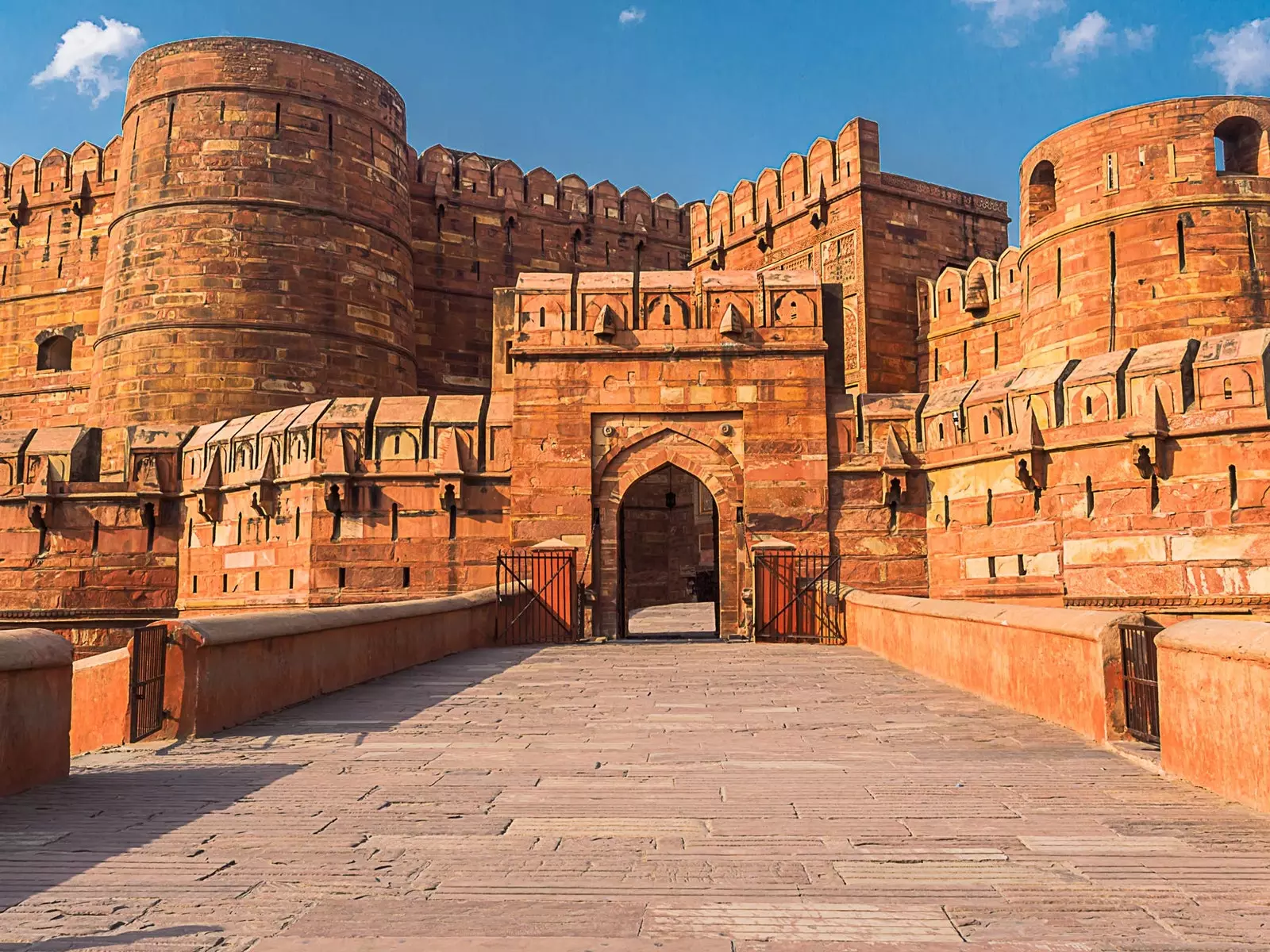
Agra Fort, a World Heritage Site
Between visits, leaving behind the south gate of the Taj Mahal, we were tempted by a tiny and rickety bar where we tried best malai kofka in agra, one of the most famous dishes in North India.
It's kind of dough, meatball type, made with cheese and creamy onion sauce. It's about as unromantic as you can get in Agra, the city brimming with love, but you leave with a spare stomach for a few walks.
And so we continue until the Fort of the city, a World Heritage Site. Just under three kilometers north of the Yamuna River, the spectacular red sandstone citadel it still reflects the glories of its past.
Was the seat of the country's capital during the reign of Shah Jahan before she was transferred to Delhi. Walking through its interior is like walking through a tale of kings and princesses steeped in ambition, wealth and envy.
The enclosure invites the tourist to recreate in a world of opulence, falsehoods and betrayals like those suffered by the Mughal emperor himself by one of his sons.
He spent the last years of his life locked in one of the rooms of the fortress from where day and night he had the best views to contemplate the mausoleum of his great love.
Absorbed in the explanations of our guide, our eyes focused on a couple of bearded and befuddled Sikhs who, oblivious to everything, did not stop uploading stories to instagram from the marble palace with its unbeatable views of the Taj Mahal.
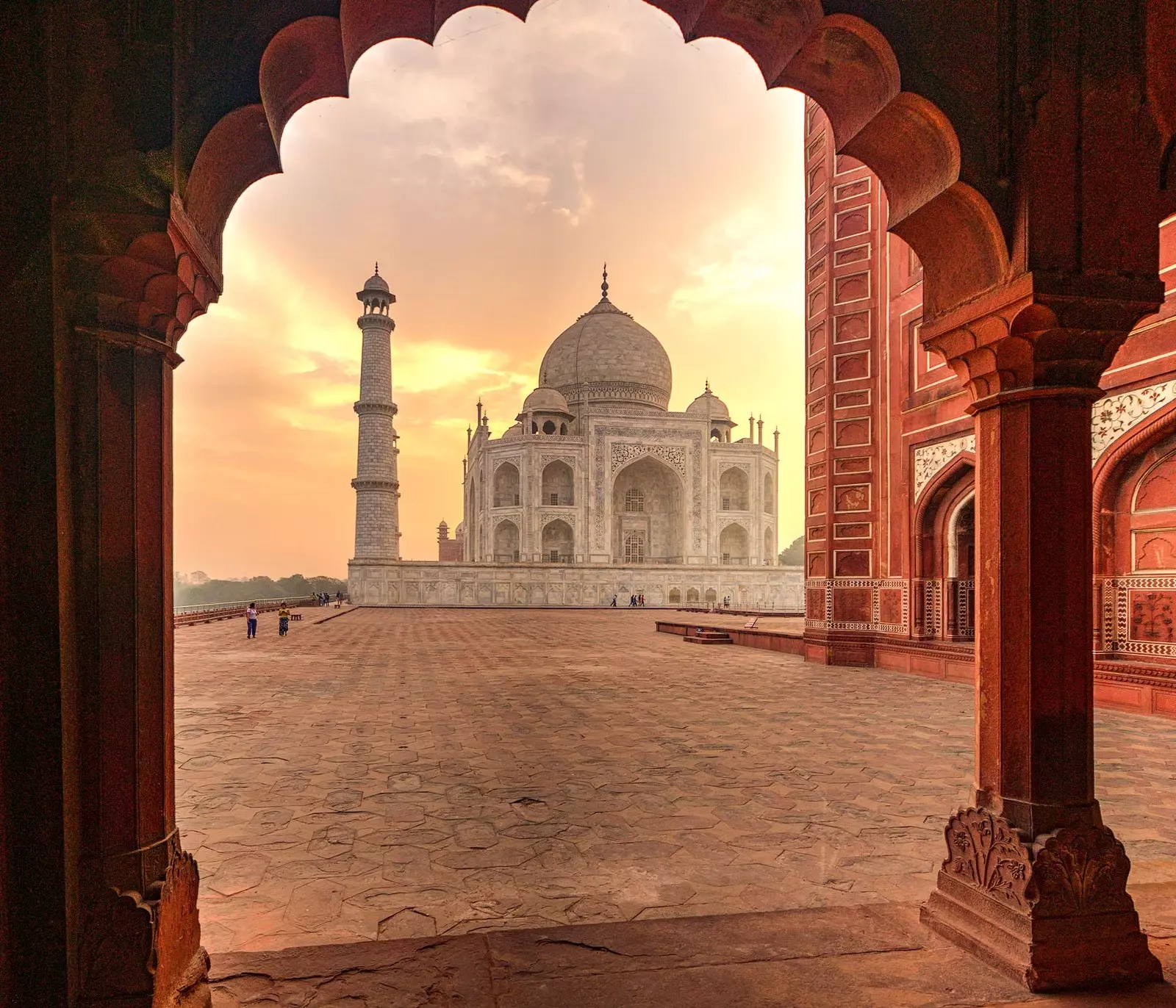
Dawn in the city of the Taj Mahal
We finish the visits and to relax (irony mode) we go to the sadar bazaar or the Sadar Bazaar, the quintessential shopping destination in Agra, with much more affordable prices than in the Tajgant neighborhood.
After a pleasant and quick negotiation, strange but true, for 50 rupees we traveled in a rickety tuk tuk to the most modern part of the city where 1.2 million people reside (a little more than a million and a half live in all of Agra).
The play of lights and musical loudspeaker competition was exorbitant. Bridging the enormous distances, the hindu times square It is the best option to get a nice souvenir of the most visited monument in India.
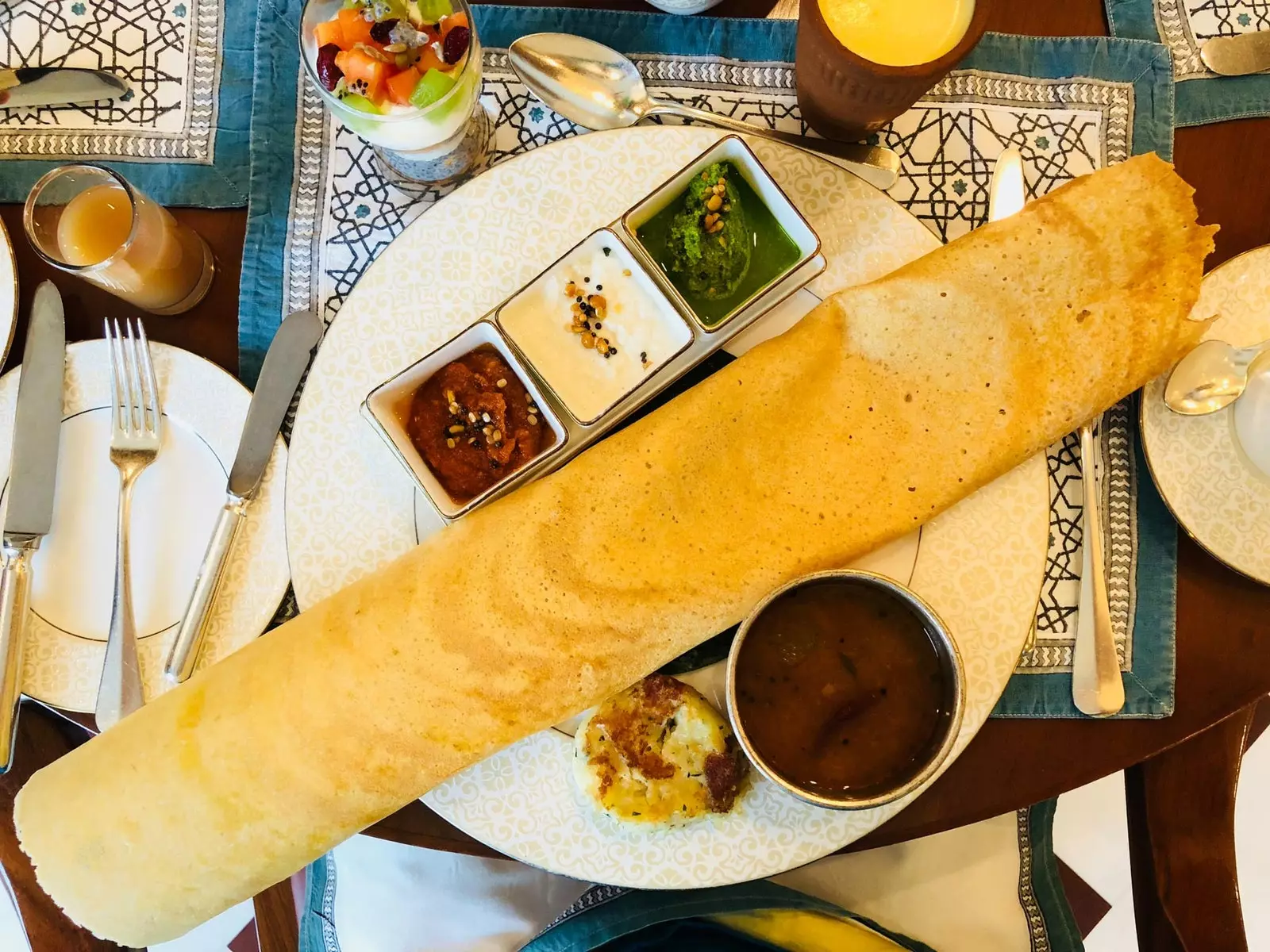
Dosa with curry, dhal and coconut chutney
*follow the adventure of **** Travel and Rock _ in Traveler.es. First stop: Delhi; second stop: Udaipur; third stop: Pushkar; fourth stop: Jaipur; fifth stop: Agra; sixth stop: Varanasi._
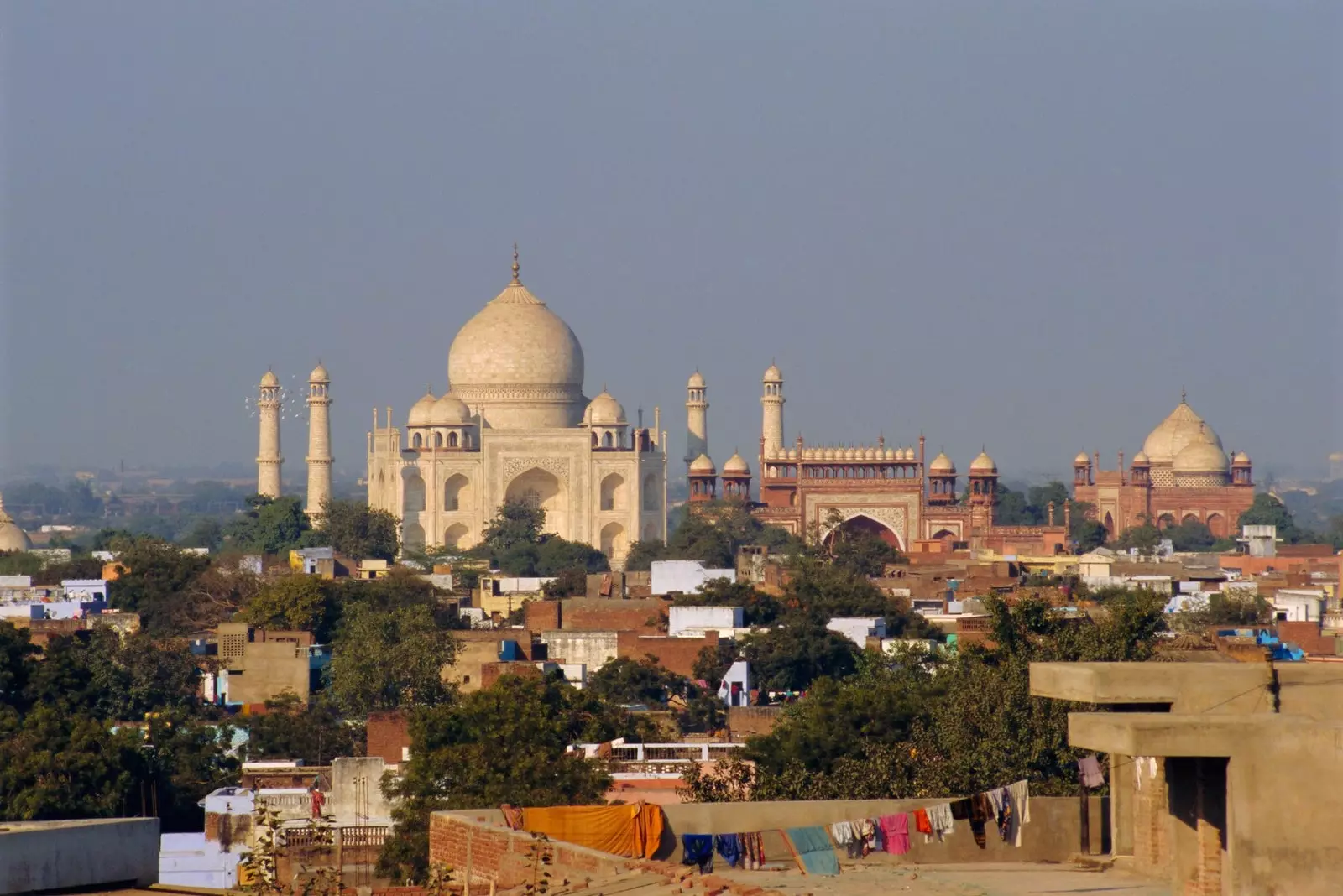
Agra hosts the greatest tribute of love ever seen
